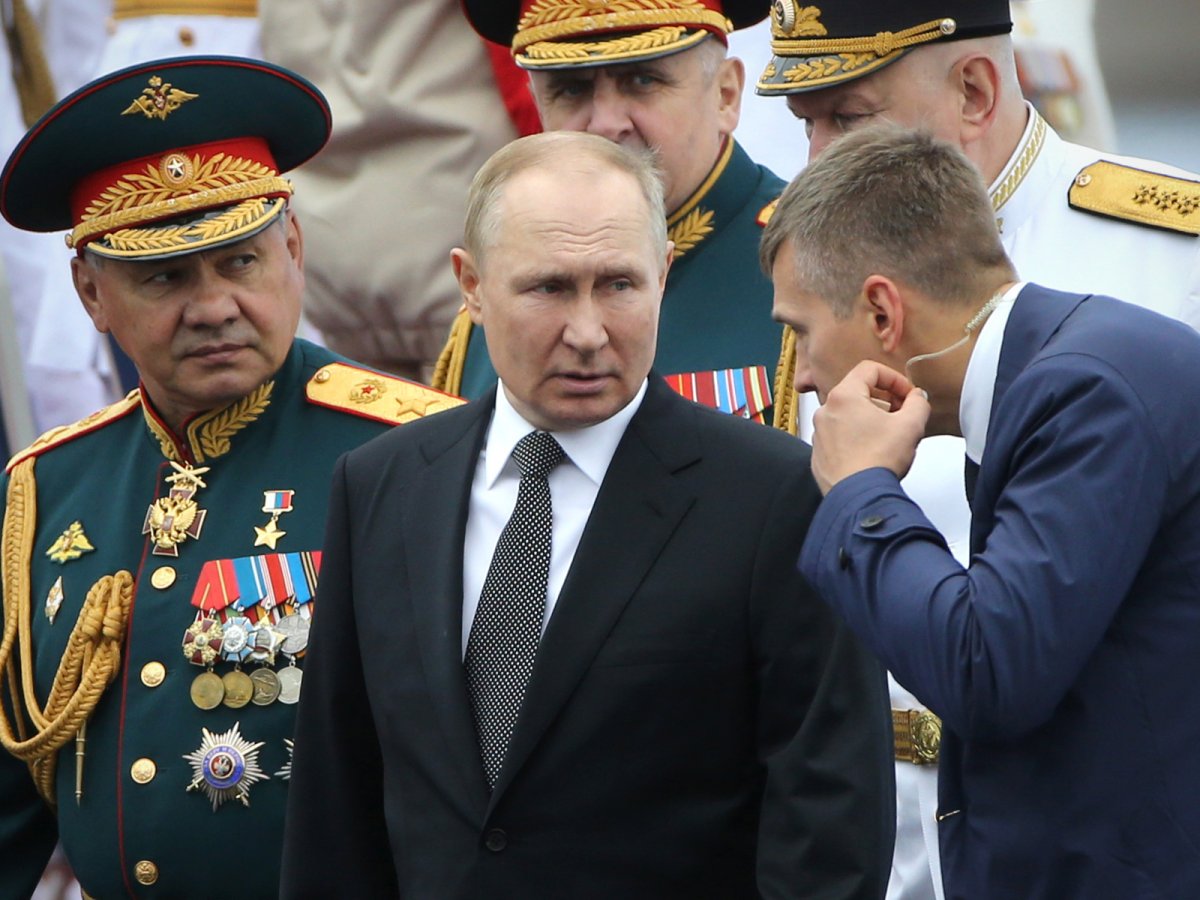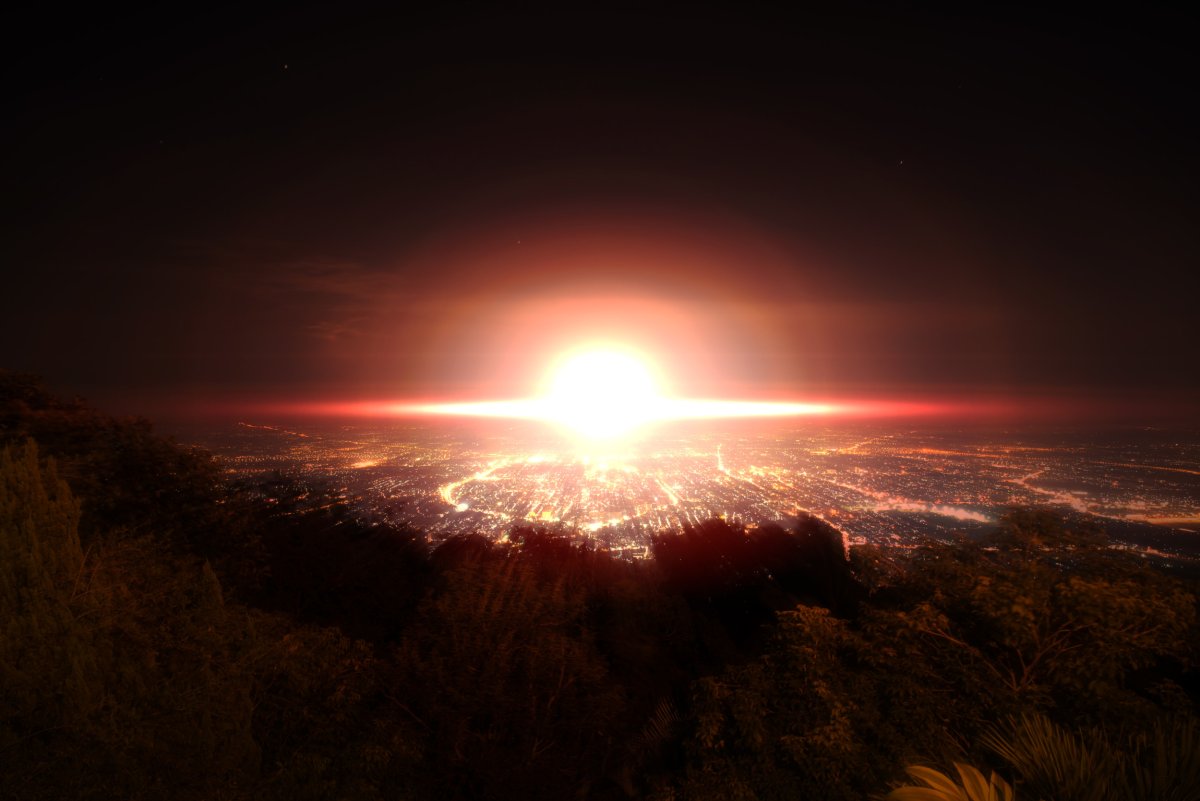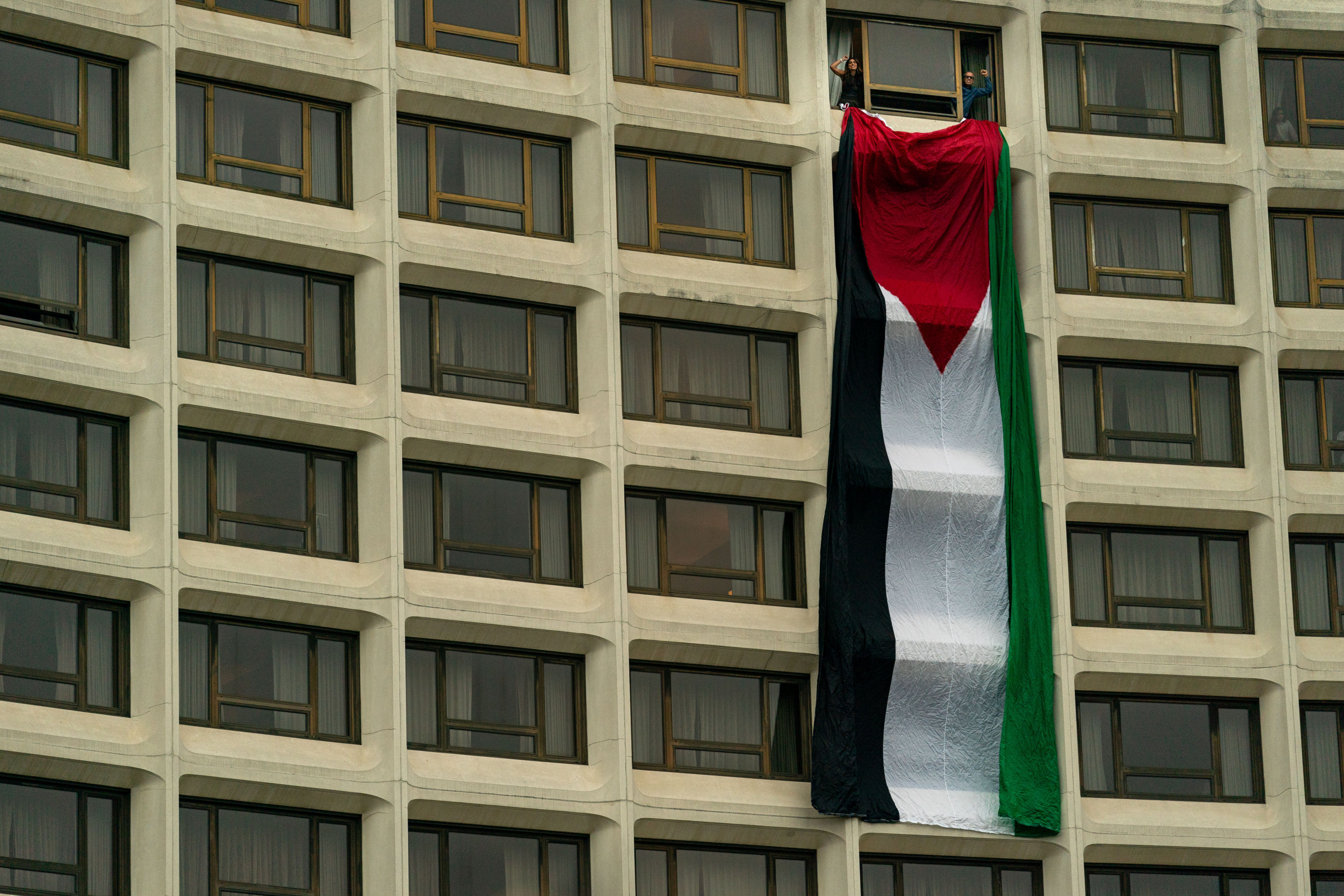There are concerns that ammunition storage facilities in Moldova might be blown up by pro-Russian forces, creating a blast at least as big as a nuclear bomb being detonated, according to sources.
OSINTdefender, a Twitter account that describes itself as an "Open Source Intelligence Monitor," tweeted that Russian supporters have rigged the facility in Cobasna, in the Russian-occupied Transnistria breakaway region of Moldova, priming it for an enormous explosion "the size of the atomic bombs dropped on both Hiroshima and Nagasaki."
The Former Military Inspectorate of the Ministry of Defense of Moldova has said that the Armed Forces of Transnistria have rigged all Arms Depots within the Breakaway Region including the Cobasna Ammunition Depot with explosives so if any Military Operations begins it will cause… https://t.co/QPfUdyr1b7 pic.twitter.com/hC1i9OO88s
— OSINTdefender (@sentdefender) February 27, 2023
"The Former Military Inspectorate of the Ministry of Defense of Moldova has said that the Armed Forces of Transnistria have rigged all Arms Depots within the Breakaway Region including the Cobasna Ammunition Depot with explosives so if any Military Operations begins it will cause Catastrophe Damage to parts of Moldova, Transnistria, and Ukraine," OSINTdefender tweeted.
"The Cobasna Ammunition Depot itself is the Largest Arms Depot in Eastern Europe and contains up to 20,000 tons of Soviet-Era Arms and Munitions with reports done by the Moldavian Academy of Science stating that if the Depot was destroyed the explosion could be the size of the Atomic Bombs dropped on both Hiroshima and Nagasaki."
The Cobasna Ammunition Depot itself is the Largest Arms Depot in Eastern Europe and contains up to 20,000 tons of Soviet-Era Arms and Munitions with reports done by the Moldavian Academy of Science stating that if the Depot was destroyed the explosion could be the size of the… https://t.co/IGfg5u1W7C pic.twitter.com/nYzb7b7gWd
— OSINTdefender (@sentdefender) February 27, 2023
The post doesn't specifically cite any document or statement by the "Former Military Inspectorate," but it might be referencing a July 2005 report by Moldovan academics that made a similar claim, stating that if the munitions exploded, the blast could be "compatible with a 10-kiloton nuclear explosion, such as the one that hit Hiroshima in 1945."
The report was cited at the time by Russian news outlets, including Regnum, and in the following years by other outlets such as Deutsche Welle.
The Twitter post also did not provide specific references or evidence for the claim that all of the depots being rigged with explosives. But even if the claim is accurate, would an explosion at the Cobasna facility really explode with the force of a nuclear bomb?

Experts said the claim is likely an exaggeration.
"I think that if the whole lot was to explode then it might be comparable to the low end of the nuclear bomb scale for some effects. It might be like the Beirut ammonium nitrate explosion which occurred at their port," Mark R. Foreman, an associate professor in nuclear chemistry at Chalmers University of Technology in Sweden, told Newsweek.
"I think that the blast will be less dangerous to the public than a nuclear bomb would be."
The main issue is the number of explosives needed to match the scale of a nuclear blast that simply isn't present in Cobasna.
"The explosive yields of the Hiroshima and Nagasaki bombs were 15 and 20 kilotons, i.e. 35 KT together—35,000 tons—3,500 times the power of the largest conventional weapon—there are no small nuclear weapons," Nobel Peace Laureate Tilman A. Ruff, co-president of International Physicians for the Prevention of Nuclear War and Australian chair of the International Campaign to Abolish Nuclear Weapons, told Newsweek.
"So for that claim to be true, there would need to be the equivalent of more than 3,500 10-ton conventional bombs detonated in the same place at the same time."
Even if there were enough explosives, the ammunition in Cobasna is stored within casings, which further limit their detonation power.
"The casing makes a difference to the blast usually lowering the yield [but this is covered by TNT equivalence], but more importantly, the explosives are bombs are further apart [usually stored separately to ensure that one store detonating doesn't trigger another] meaning that timing it to appear [and act] as a single blast would be difficult," Sam Clarke, a professor of blast geotechnics at the University of Sheffield in the U.K., told Newsweek.
It is possible to make up similarly large blasts from non-nuclear weapons such as in accidental detonations like the one in Beirut, but in that case, the individual explosives were not cased.
"If you were to pile up bombs/shells containing TNT or another similar explosive then it is possible to create a heap in which mass detonation is possible," Foreman said. "Detonation is defined as an event which is propagated through a mass of substance by a shockwave normally moving faster than the speed of sound in that medium. If the reaction front travels more slowly through the medium it is normally considered to be a deflagration. The rate of energy release in detonation is higher which often causes the event to be more able to cause damage."
Another issue with this claim is that for the explosion to approach nuclear-blast levels, the ammunition would all have to detonate at the same time.
"I imagine it would be difficult in a large ammunition storage facility to link all the weapons so that they detonated at exactly the same time. More likely there would be weapons exploding over a period of time," Ruff said. "Also lots of small explosions would interfere with each other so the blast wave radiating outward from the site I would expect to be considerably weaker than the same total explosive power emanating from one point in a nuclear explosion."
Ammunition storage facilities often have buried bunkers, spacing of ammunition, and earthen walls or banks surrounding them, Ruff said, which would tend to attenuate the blasts from exploding ammunition.

"Consider if we had 20,000 tons of bombs in the bomb store. It is normal to divide down the explosives in a large store into smaller amounts. These are placed at a distance from each other to greatly reduce the likelihood of the explosion of one pile triggering other piles," Foreman said.
If someone wanted to cause the entire store to explode, they would need to either move all the explosives closer together, or provide a means of triggering all of the explosive piles.
"Moving all the explosives into one big pile will require a lot of work and hopefully should be possible to see by satellites," Foreman said.
Regardless of whether the explosion approached the ferocity of a nuclear blast, it would still be incredibly damaging and dangerous to people nearby.
"Of course an explosion of stored ammunition could cause devastating blast and ignite fires, but overall the effect would be less than a nuclear weapon of similar total explosive yield, and of course there would be no radiation or radioactive fallout, and very different implications and escalation risks," Ruff said.
Additionally, the fact that nuclear bombs are usually detonated in the air allows more of the blast energy to travel further, resulting in the massively widespread destruction in the aftermath of a nuclear blast. This ammo storage facility is, of course, based on the ground, which means that less energy will travel less far.
"Also the bombs dropped on Japan were detonated up in the air, this was to increase the effect of the blast," Foreman explained. "I am also sure that exploding them in the air also increased the effect of the infrared light [heat]. If you were to trigger those atom bombs on the ground then the curvature of the earth and the lumps and bumps on the shape of the ground would limit the range of the heat effect.
"As the explosive event will be a surface burst, then I imagine that a lot of the blast energy will be wasted by displacing earth and making a crater. Hopefully the bomb store is a long way from where people live so the dramatic effects on the surface [forming the crater] will have little effect on the people living in that part of the world."
Do you have a tip on a science story that Newsweek should be covering? Do you have a question about nuclear explosions? Let us know via science@newsweek.com.
Uncommon Knowledge
Newsweek is committed to challenging conventional wisdom and finding connections in the search for common ground.
Newsweek is committed to challenging conventional wisdom and finding connections in the search for common ground.
About the writer
Jess Thomson is a Newsweek Science Reporter based in London UK. Her focus is reporting on science, technology and healthcare. ... Read more
To read how Newsweek uses AI as a newsroom tool, Click here.








